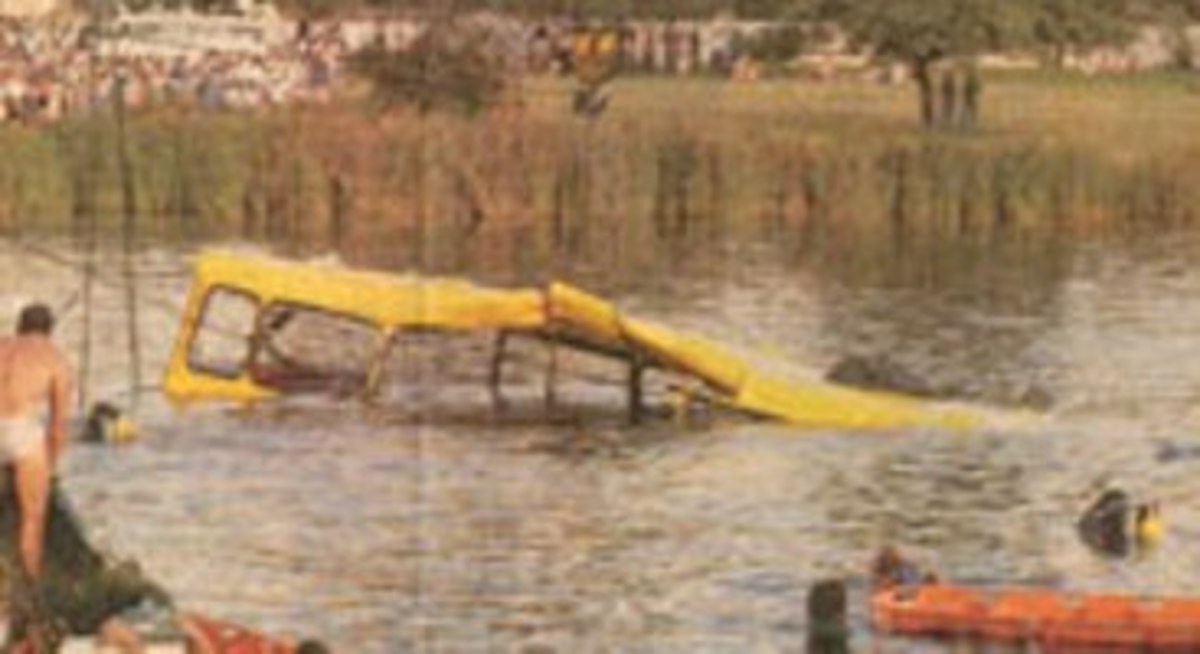The Dive Reflex - How humans stay alive when drowning

It was a cold, star light night in the little town in Montana where his family lived. The thermometer in his car read 28 degrees as Kevin pulled into the driveway of his girlfriend’s house. The motion sensor light above the driveway flicked on and he was able to see the plates of her mom’s truck parked in front the garage door. As he unlocked the doors, he thought bitterly about how frigid his leather seats were going to be in the morning, his dad had already claimed the only spot in the garage at his house.
However, it had been a wonderful night. They had spent their time lying out on the grass identifying stars and constellations and his spirits were warmed when she leaned in to kiss him good-bye,
“I’ll see you tomorrow…right baby?” she asked
“Oh of course, well assuming I don’t get horribly injured tonight or something!” he joked
“Haha, very funny” she said with a fake pout on her face before walking away and into her house.
He took a minute to gather his thoughts and the backed out of his driveway and headed towards his house. Because it was such a clear night, he decided to take the long way home around the lake; he was always amazed at the way moon and stars reflected off the water.
As he came around the first bend the lake was in sight but there was no reflections. “It’s all frozen over,” he scowled to himself, “why did I not think of that, its frickin freezing out here.” He gave up on his idea to see the stars and, feeling the fatigue of a long day set into his body, he kept on following the road around the lake back to his home and that was right when his car slid off the road, crashed through the ice and sunk to the bottom of the frigid water.
Did this story increase your interest in this article or just bore you?
A nearby neighbor heard the sound and investigated but it was not until 40 minutes later the the EMT’s he called arrived and started trying to remove Kevin’s car and body out from the water. By that time it had been almost 50 minutes since the last breath of fresh oxygen entered his blood stream.
As was the popular taught method until recently, the EMT’s did not try to resuscitate him because even if they could, they would be reviving a vegetable. The brain cannot last more than 6-8 minutes with out oxygen before brain damage sets in (or can it……!)
As the ambulance sped off to the hospital, the EMT was reflecting on the horrible task ahead of calling the boys family when a small cough was heard from the matte black body bag on the gurney next to her. Amazed at what she had heard, she ripped open the bag and started CPR immediately?
Amazingly, Kevin was able to be resuscitated in the back of the ambulance and walked out of the hospital the next morning all of his own power. You may be wondering how in the world a man who was legally dead for over 50 minutes was able to come back from that and im here to explain it.
The reason that Kevin was still alive after all that time was because of something called theMammalian Diving Reflex.
The Dive Reflex
The Mammalian Diving Reflex is just another one of the amazing survival instincts that are inherent in our bodies. It can be seen most prominently in seafaring mammals such as whales, dolphins and seals as well as other water dwelling mammals like beavers. It is what gives these animals the ability to dive deep (300 plus ft) and stay under water for so long.
Bradycardia or the slowing down of the heart rate is the first sign of this reflex setting in. Seals have been shown to have such intense changes that their hearts will go from 125 bpm to a mere 50 bpm in a matter of seconds. When the heart slows down it lessens the amount of oxygen needed in the blood and frees it up for use in other areas of the body. Check out this video to see the real-time effects on humans.
The second thing that happens is what’s known as peripheral Vasoconstriction. That is, the body stops pumping blood to the extremities of the body starting with the fingers and toes. This helps the body to conserve energy, oxygen and blood flow and re direct it towards more important things such as heart and brain functions. Ultimately, all the blood flow to the arms and legs will be cut off if it lasts long enough.
The third thing that happens is that the organ and circulatory system walls will open up and allow blood and oxygen to pass through them into the chest cavity. The alveoli will also fill up with blood plasma that gets re-absorbed when the body leaves the environment. These things make it so that your organs and body wont be crushed by the pressure difference of being deep under water. For an amazing description of the whole system, check out this BBC Video.
It may not look like it from this freeze frame but I promise, the videos about the dive reflex
How It Happens
While it is not really understood how this amazing ability is triggered, we do know when it happens. For the Mammalian Diving Reflex to set in, the water must be cold (below about 20 degree C but the colder the better). Also, the younger the person, the easier it is for them to experience this reflex. Because this is the case, there have been reports of babies falling into hot tubs and surviving but I really don’t recommend trying it and it is not as common as when in cold water.
When the face or chest area is shocked hard and fast enough, this reflex sets in. As of now, there have been no successful attempts to enter this state voluntarily but scientists are working on it. If a way was found to control this condition, who knows what the effects would be. Maybe we could start sending people on extended length space missions or something epic like that. Most likely it would just be turned into a pill and some company would make billions but that would be cool too I guess, as long as I could afford the pill!
Any way, whether you think this is a reflex left over from birth or a freaky, little known evolutionary trait that’s hidden in our DNA, its pretty awesome and who knows, maybe it will save your life someday.









